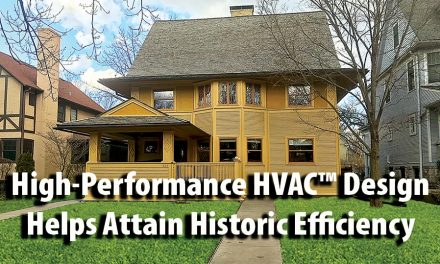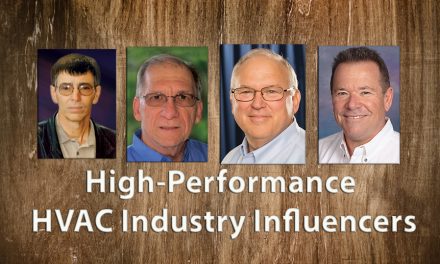Follow Protocol for Installation
Load Calculation. This is a most important requirement. You must remember, no matter who performs the load calculation, you and your company are responsible for the end results.
Equipment selection. Taking the results of the Manual J and Manual S will help you select the correct equipment for the job. Avoid preconceived notions on tonnage for the job.
Pay attention to sensible and latent loads and match them with systems that perform at the correct capacity. Whether in heating- or cooling-dominant climates, make sure the system has the capacity to handle the secondary load.
Pay special attention to high SEER heat pump capacity.
Duct Layout. Too often we send an installation crew out with little more than a truck full of duct materials. Why would we expect a quality installation with no guidance?
Take the time to survey and measure the job from inside the home. Make adjustments once you view the job from the attic. If we view the job from the attic only or initially, we will always include too much linear footage of duct as it is extremely difficult to judge distances or measure in the attic.
Make sure you follow the fundamentals of ductwork outlined in National Comfort Institute’s (NCI) training.
A quick reference guide is included on clipboards from NCI’s sales and support page (ncilink.com/Clipbds).
Duct Install. The efficient use of duct materials is the number one trait of a quality installation. Using the smallest amount of duct routed straight and turned on a slow radius will yield great airflow results.
Just because flex duct is flexible doesn’t mean it should be. View every flex duct run as if it is rigid pipe. Where you don’t have room, you must find a solution or quality will suffer.

Transitions. All too often we see filter housings butted up against a furnace, air handler, or a slab evaporator with a transition that exceeds 25 degrees. These close-up encounters with components in the air stream cause noise, excessive velocities, high in-duct pressures, and poor heat transfer.
Where evaporators are placed too close to the air outlet, the result is an appliance that will never achieve its potential for removing heat.
Adequate return grille size. Adequate return grille size is easy to calculate. Divide the required cfm of the appliance by 2 and you have the gross grille area required for proper airflow at a reasonable velocity.
An example is 2.5 tons requires 1000 cfm. Divide 1000 by 2. So, we need 500 square inches of gross grille area.
What we pay little attention to is the choke on performance the filter provides. That is our next point.
Using the appropriate filters. If performance is your goal, you understand that one-inch filters have little room in your inventory. Only the smallest air handler and furnaces will operate efficiently with one-inch filters, and those filters will not be above a MERV 7.
Where capacity exceeds three tons nominal, you will likely need two media filters to handle the job.
With evaporator fin count so dense it is imperative we protect the customer’s investment with better filtering. Perhaps you include media filters as a standard with all your jobs.
The deep-pleated media will help prolong the life of the evaporator, even when time gets away from the customer. If we change the filter annually, the evaporator will most likely survive. These filters will not break the bank.
The refrigerant charge. Please note that weighing in the charge at startup will save your company on return trips and warranty calls. Superheat and subcooling stats take you only so far.
To accurately charge a system with this method you must verify that airflow and air temperatures fall within seven to 10 degrees of desired laboratory settings. Anytime we charge a system when temperatures are low, we can overcharge it. When temperatures are high, we can undercharge the system.
On a final note, it is impossible to charge a heat pump correctly in the winter without weighing in the charge.
Click Below for Next Page:













Recent Comments